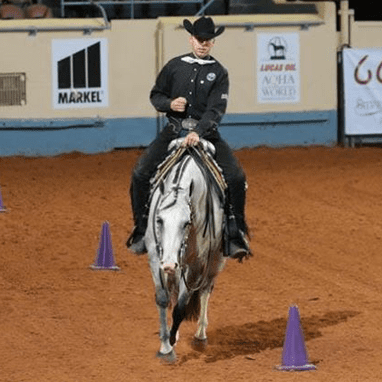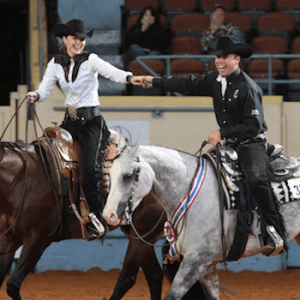Western riding is often said to be the hardest class at the horse show. The great ones make it look so easy but it is a class that requires precision, timing, and a seamless delivery to produce a performance that is credit earning.
Sure, a horse needs a certain amount of talent to excel in the class, and it sure doesn’t hurt if they’re a really good mover. However, a rider who knows their horse’s talents and limitations can use that knowledge to improve their score.
GoHorseShow sat down with AQHA Professional Horseman and the 2015 AQHA World Champion in Junior Western Riding, Blake Weis, to get his thoughts on what exhibitors can do to deliver that much desired, credit earning performance.
1) Treat the Log Like a Trail Log
We’ve all either seen or experienced, a flawless western riding go that is ruined by a “bad log.”
Weis said, “The log is definitely the worst part of the class. That one log can kill you because, unlike trail, there is so much free space on either side.”
 To remedy this, Weis recommends looking behind or past the log, not directly at it. In trail, you don’t look down at your logs, you always look behind them, same goes for the log in western riding.
To remedy this, Weis recommends looking behind or past the log, not directly at it. In trail, you don’t look down at your logs, you always look behind them, same goes for the log in western riding.
“If you look at the log, you can subconsciously start rushing and that is never good,” he said. “It is always safer to slow down rather than speed up and ride to the log. So look behind it and wait for it to come to you.”
2) Don’t Slow Before the Change
“This is just not a good idea at all,” said Weis. “If you slow them down before the change, horses tend to get flat and don’t change as well. This really messes up the overall picture of the pattern.”
The unwritten rule on how to ride a western riding pattern is to ride into and through the change. Lead changes should have forward movement after all, so ride it that way.
3) Soften After The Change to Maintain a Good Flow
 If riding your horse into and through the change is the first element to master, the next is how to maintain a good flow without constantly speeding up or slowing down. (Which, obviously is not credit earning).
If riding your horse into and through the change is the first element to master, the next is how to maintain a good flow without constantly speeding up or slowing down. (Which, obviously is not credit earning).
So, if you are riding into and through the change, how do you prevent your horse from, well, getting excited about it and taking off with you? The key is what you do after the change.
Weis said, “You always want to ride up to the (lead) change without allowing the actual rhythm to change and you don’t want to let the rhythm take you. If you soften your body slightly after the change, this will help you maintain your flow without changing rhythm or speed.”
Remember, you are the one guiding your horse through the pattern, not the other way around. You will need to make adjustments on your end, as the rider, in order for your horse to appear as flawless as possible to the judges.
4) Slow Your Brain Down
It’s not just horses that anticipate in western riding, riders do it too, especially down the line.
“There are many different ways to approach this,” said Weis, “but what I like to do down the line is once I get to each cone, count three strides and change. Generally, you will be changing every six strides, but it can get tricky to count six. Your brain starts to race and your body follows. Counting to three each time you get to the cone slows your brain down and your body will follow.”
5) Understand Your Horse’s Stride
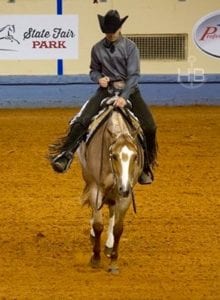 “Every horse has a pace,” said Weis. “Some horses can do the pattern slowly, others need to be pushed up, but the bottom line is you need to understand their stride and where they perform the best.”
“Every horse has a pace,” said Weis. “Some horses can do the pattern slowly, others need to be pushed up, but the bottom line is you need to understand their stride and where they perform the best.”
By understanding your horse’s stride, you can make the necessary adjustments to deliver a smooth pattern without a horse getting racy or dumpy. Simple as that.
6) Know Which Shows to Accelerate the Level of Difficulty
In addition to understanding your horse’s stride, Weis also said that it is important for riders to know and understand that your pace should be different for a weekend show and the big stage such as the World Show or Congress.
“World Show pace is (and should be) different from a weekend show,” he said. “Your time to shine is at the big shows (where the arenas tend to be bigger) and a little more pace is required to be more credit earning. However, if you try to strive for that pace at every show you go to, chances are your horse is going to get ‘racy’. The weekend shows are to make sure you have control so when you do increase the level of difficulty the control is still there.”
7) Perfect the Stop and Back
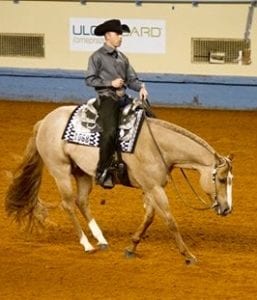 Many people think of the stop and back as an afterthought. They are more concerned with perfecting their lead changes but, according to Weis, the stop and back is a maneuver that is often taken for granted. It’s a good one to work on.
Many people think of the stop and back as an afterthought. They are more concerned with perfecting their lead changes but, according to Weis, the stop and back is a maneuver that is often taken for granted. It’s a good one to work on.
“It is so easily fixable and can earn you an extra half point,” he said. “A nice, hard stop, with a nice even back without having your hand in the air is absolutely credit earning and something you should strive to perfect.”
Seriously, you’re only doing yourself a favor.
8) Rein Length Should Be Adjusted to the Horse
Just like understanding your horse’s stride and when to increase the level of difficulty, understanding a proper rein length is crucial to your success.
“This is another thing that really depends on the horse and knowing your horse,” said Weis. “It’s not okay to have floppy reins, but if the horse steers well and carries themselves well, a looser rein is acceptable. If your horse isn’t great at steering, you need a tighter rein.”
A good rule of thumb is somewhere between a western pleasure rein and a horsemanship rein, again, depending on your horse’s capability.
9) Don’t Forget About Corners
 Speaking of steering, make sure your horse steers well enough to get around the corners in the pen.
Speaking of steering, make sure your horse steers well enough to get around the corners in the pen.
For Weis, if a horse doesn’t guide well, it really doesn’t matter how well the horse changes leads, more work needs to be done at home.
Don’t be that person.
“If your hand is in the air trying to guide your horse around the corners, you need to work on more basic stuff at home,” said Weis. “Work on loping boxes, getting off your outside rein and staying balanced. This will also help shape your horse’s shoulders to help with your changes.”
10) Don’t Forget About Good Showmanship Either
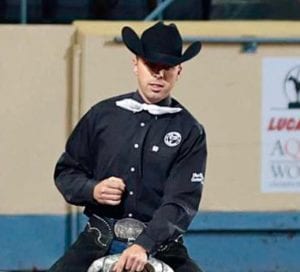 Even though western riding is judged on the horse, like any other class in the history of horse showing, the presence, and showmanship of the exhibitor only adds to the overall picture and serves to more completely showcase your horse’s capability.
Even though western riding is judged on the horse, like any other class in the history of horse showing, the presence, and showmanship of the exhibitor only adds to the overall picture and serves to more completely showcase your horse’s capability.
Weis mentioned a few things that you can do (or not do) to further your showmanship in this class.
“If you’re on a seasoned horse, it definitely looks better if you don’t have to swing your legs through the change,” he said, “Green horses really do require a kick through, but on a seasoned horse, it looks better if you can keep it to a minimum.”
“Trusting that your horse will change while not looking down at them, but rather looking ahead at the cone also adds to your overall showmanship,” said Weis.
Finally, in a day where fringe is all the rage for women exhibitors, make sure you are a smooth enough rider and have a good rhythm before you break out the fringe covered show jacket.
Weis said, “I think fringe can look really nice if you aren’t bouncing all over the saddle. Otherwise it can be distracting.”
The biggest takeaway from Weis’ tips is that knowing your horse and understanding your horse will help increase your score. You can and should make adjustments to showcase your strengths and get through your weaknesses.
Nearly every tip he gave us, concluded with, “You have to know your horse.”
While this statement rings true in any class in the show pen, it is especially helpful in the more technical classes, like western riding.
Thanks, Blake!


